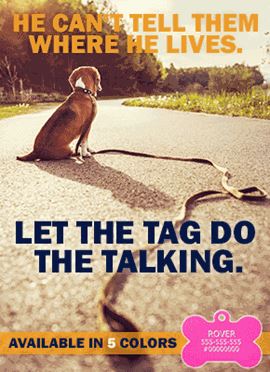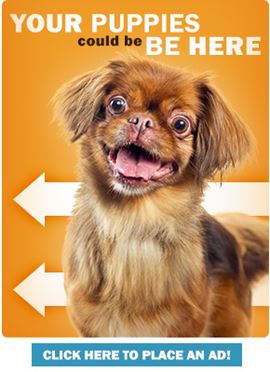
Ultimate Christmas Safety Guide, Part 2
In part one of our Ultimate Christmas Safety Guide, we talked about a few ways to make your Christmas decorations more dog friendly, and we also discussed the importance of offering safe (and delicious) treats during the holidays. In part two of our Ultimate Christmas Safety Guide, we’ll give you tips for picking the right Christmas tree and the best tree decorations. Also, we’ve got recommendations that will help you avoid any unwanted interactions between your prized pup and holiday visitors.
So, without further ado, here’s part two of our Ultimate Christmas Safety Guide!
Top Tree Tips
Let’s face it—Christmas without a Christmas tree is about as lame as a lump of fruitcake in your stocking. But, for some dog owners, the addition of a Christmas tree can create real problems within the home. Thankfully, there are a number of steps and precautions dog owners can take to minimize the risks of keeping a tree and a dog in the home for the holidays.
First, it’s probably a good idea to keep ornaments and lights out of your pet’s reach. If your dog chows down on glass ornaments, food decorations (such as popcorn strings), or electrical lights, your holiday will be neither holly nor jolly. Consider placing your tree decorations higher up so that your dog cannot get to them. And, since tinsel can have a devastating effect on a dog’s insides if swallowed, it’s best to keep it out of the picture entirely.
Also, some curious/parched pups may try to take a few laps of the Christmas tree’s water. Tree water is toxic and should not be consumed by pets under any circumstances. Make sure that the water for your tree is in a secure container that is closed off and inaccessible to your pet.
Artificial trees may seem like a logical choice to sidestep some of the problems associated with real Christmas trees, but that isn’t necessarily the case. Some trees are made of PVC, which can contain lead and unsafe chemicals. Additionally, the flocking sprays and powders that some choose to decorate their trees with can also contain potentially dangerous chemicals. So before you decide to go with an artificial tree, make sure you know where it comes from and what it’s made of, and it’s probably best to skip the fake snow altogether.
Prepare Your Home and Your Pup for Christmas Visitors
Unfortunately, plenty of loving dogs can lose their cool when meeting strangers. Perhaps because of their upbringing or their general temperament, some canines don’t fare well in social situations.
But, like most other unwanted behaviors, poor social skills can be improved with a little work. After all, aggression toward strangers is often a sign that a dog is feeling insecure and anxious. A few confidence-building exercises and some positive-association practice can work Christmas miracles—or at least help your dog stay on Santa’s Good List.
From Grinch to Social Butterfly
So, what's a surefire way to make sure Spot doesn't develop negative attitudes toward guests? Well, although there are no guarantees, the best option is to socialize him, especially as a puppy, when he’s still forming attitudes toward people, places, things, and experiences.
Exposing a puppy to a variety of people with different body types, hairstyles, skin colors, and clothing teaches him that new people and situations are positive and not something to fear. Basic obedience skills can also stop unwanted behavior and teach self-control. An “incompatible behavior” can redirect the dog’s attention. (If a dog sits on cue, he’s less likely to jump on you.)
However, for older dogs, changing established behaviors can be much more complicated. Although socialization improves a dog's interaction with people, if the dog is already distrustful of others, reversing years of negative associations will be hard work. These dogs need exercises to build confidence and positive associations with people.
For example, a great way to build a nervous dog’s confidence is to train him to “look at me” on cue, reward him, and redirect his attention to something positive (like a favorite toy or another cue for a reward). If repeated consistently, this technique gradually desensitizes the dog to the trigger by shifting the dog's focus from the anxiety to a source of comfort.
Greeting the Guests
Before guests arrive at the door, leash your dog, but don’t mistake the leash for a tug toy. Far too often, an owner will pull on the leash when a new person arrives, but instead of controlling the dog, the leash’s tension tells the dog there's something wrong or dangerous about the new person.
Direct eye contact, too, can be misunderstood as a threat or challenge. For your non dog-savvy guests, caution them ahead of time to avoid direct eye contact and, perhaps, to ignore your dog altogether until he adjusts to their presence. Always leave plenty of space between the guests and the dog, free from walls or other barricades that will make him feel cornered.
If all else fails, fetch the food. Have strangers introduce themselves by tossing out a few treats after a successful sit-stay. (Most dogs can’t resist a nibble, and it’s a great icebreaker to prove the guest is friend and not foe.) ’Tis the season for giving, after all.
Unfortunately, regardless of socialization and training, some dogs may never be guest-friendly. These dogs need a safe space to retreat during get-togethers. For severe problems, consult a certified animal behaviorist.











 Affiliate Clubs
Affiliate Clubs



